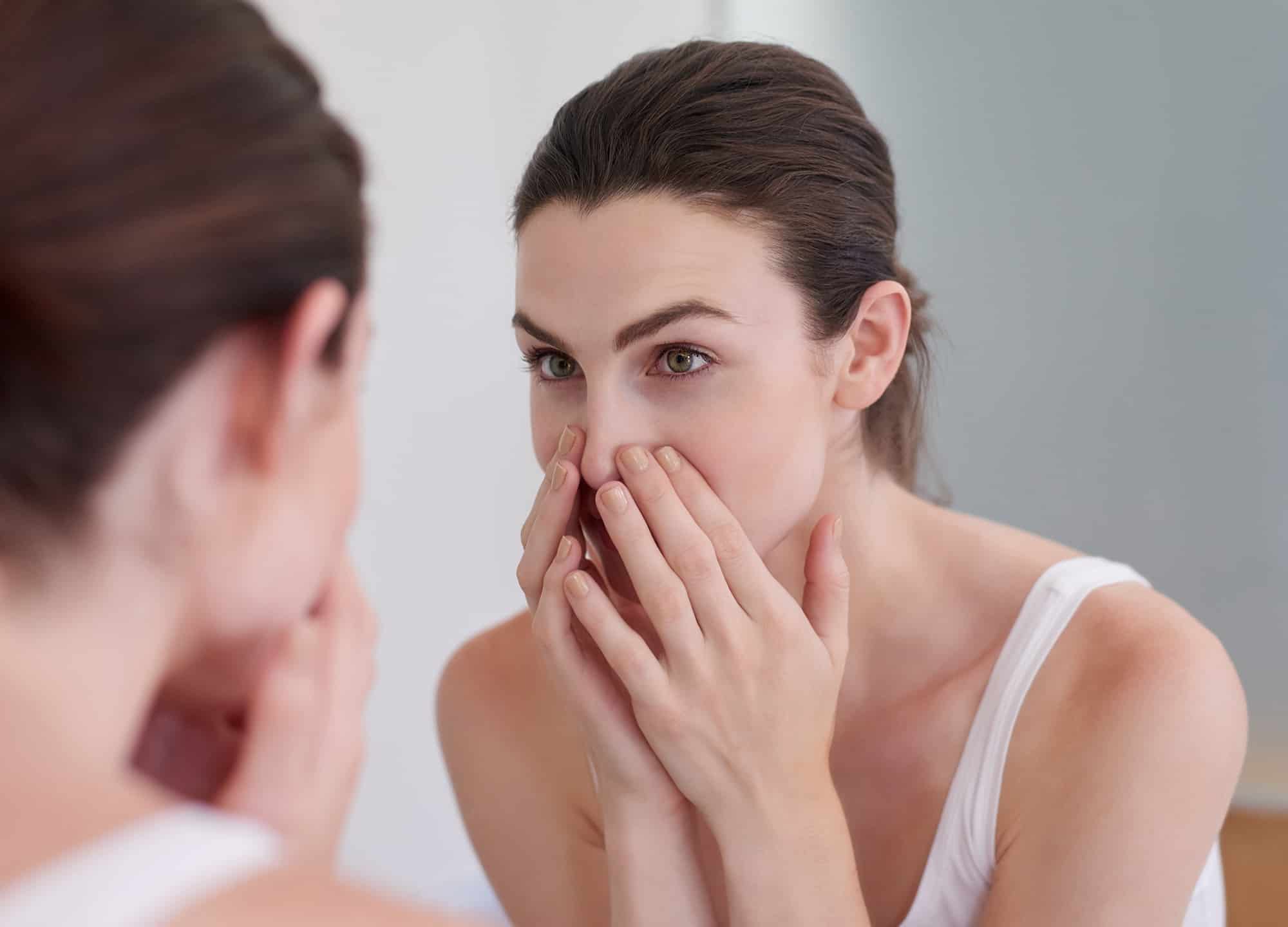Modern beauty advancements have given us the ability to alter almost anything we wish. Longer lashes, bigger breasts, Margot Robbie’s exact shade of blonde… they’re all possible to achieve, if you have the time and money. But there are some things—namely, pore size—that just can’t be changed, no matter how many products at Sephora promise to do so.
What causes large pores?
“When it comes to pores, you can’t really change them, considering they are genetically predetermined,” says Dr. Shari Sperling, a board-certified dermatologist in Florham Park, New Jersey. But before you go lamenting your family tree for your enlarged pores, keep in mind that they’re completely normal and come with a silver lining: bigger pores mean your skin likely produces more oil, and there’s evidence that oily skin shows fewer wrinkles and other signs of aging. But if that fact is of little comfort in the face of airbrushed skin-care ads and you’re desperate to get rid of your large pores, there are some things you can do to at least minimize the appearance.
First, be skeptical of products that claim to shrink large pores and primers that are geared toward smoothing out your complexion before foundation application. Since they can’t actually decrease your pore size, they often include silicone, a commonly used ingredient that is derived from silica and has been met with some controversy. While silicone gives formulas a silky, soft texture, these products are essentially filling your pores to create that smooth canvas. Silicones are also water-resistant and can create a barrier to other products, making them harder to wash off. This can cause breakouts or irritation for some people.
Dr. Arash Akhavan, a board-certified dermatologist in New York City, says it’s important to remember that these products aren’t actually changing the size of your pores, just masking them so they’re less visible when makeup is applied. He adds that while silicone-based products can certainly help prepare your skin to look “flawless,” they should be avoided during times of high humidity or in situations where you’ll be sweating. When mixed with moisture, they can cause inflammation and clog pores in the long run.
The most effective treatments for large pores
A solid skin-care routine that gradually improves the appearance of pores is a better option than a quick-fix primer. Dr. Sperling suggests using an exfoliating cleanser with salicylic acid or glycolic acid to tackle dead skin, refine tone, and make pores appear smaller. “I also recommend patients use sunscreen daily and retinol nightly, to help increase cell turnover, keep skin looking healthy, and cleanse pores,” she says. Dr. Akhavan suggests alpha and beta hydroxy acids and retinol products because they spur collagen generation and skin tightening. According to a 2016 study in the journal Dermatologic Surgery, decreased elasticity around pores is one of the main causes of their becoming enlarged, so if you use a product that can increase collagen production, it may potentially lead to tighter pores.
Related: 5 Best In-Office Treatments to Try If You’re Not Ready for Fraxel
When it comes to in-office treatments for large pores, Dr. Marisa Garshick, a board-certified dermatologist in New York City, recommends CO2 laser resurfacing, Fraxel, and radiofrequency microneedling. “These help to improve skin cell turnover and promote collagen, which gives the skin a smoother and tighter appearance,” she says, adding that a series of chemical peels can also be a great way to reduce the appearance of pores. “I generally like treatments such as laser and chemical peels [because] the effects continue to build,” she says. “I always recommend the patient maintain these results with regular use of a retinoid and an exfoliant a few times per week.” Dr. Akhavan seconds all of the above, adding: “One of my favorite devices currently is a skin-rejuvenating laser, called the Picoway, that very effectively produces collagen in a series of treatments, with only a few hours of minor redness with each treatment.”
Recently, there’s been talk of Botox as a pore-shrinking, sebum-reducing solution. In a 2019 study published in the Journal of Dermatological Treatment, researchers from Egypt injected 20 patients with botulinum toxin type A on one side of their face and saline on the other. The results determined that “both sides showed significant reduction in their sebum and pore scores, with significantly more improvement on the botulinum toxin–treated side.” But Dr. Akhavan has doubts. “This was a very small study—and more studies like it, treating larger numbers of patients, would be needed to see if this is really a positive effect from Botox. In my limited experience using Botox in this way, it does not appreciably shrink pores,” he says. Dr. Garshick agrees that more research is needed, but she does some have anecdotal evidence that it could help: “I often have patients who notice their pores appear smaller and they feel less oily after [getting] Botox to reduce wrinkles.”
If all else fails, there’s always the Facetune smoothing tool—it’s free, won’t clog your pores, and works every time.











